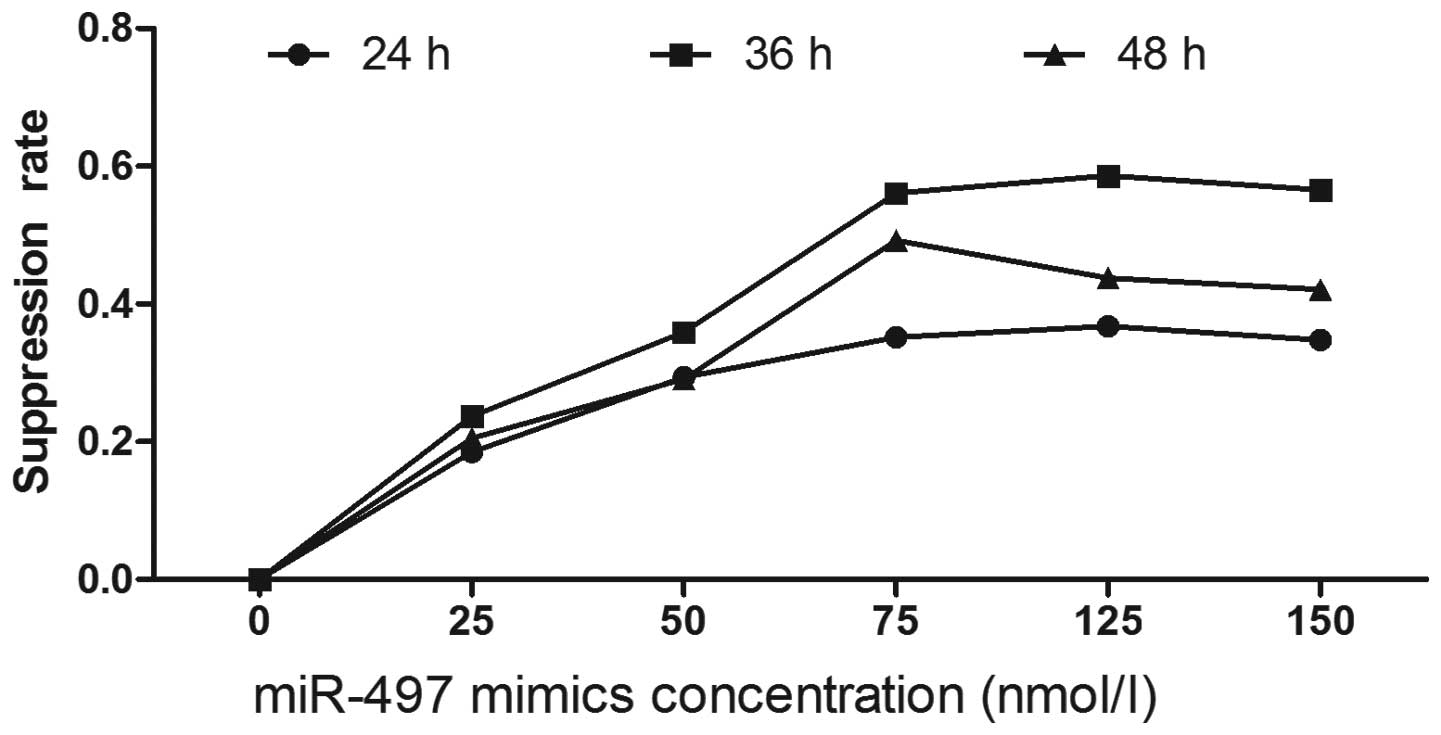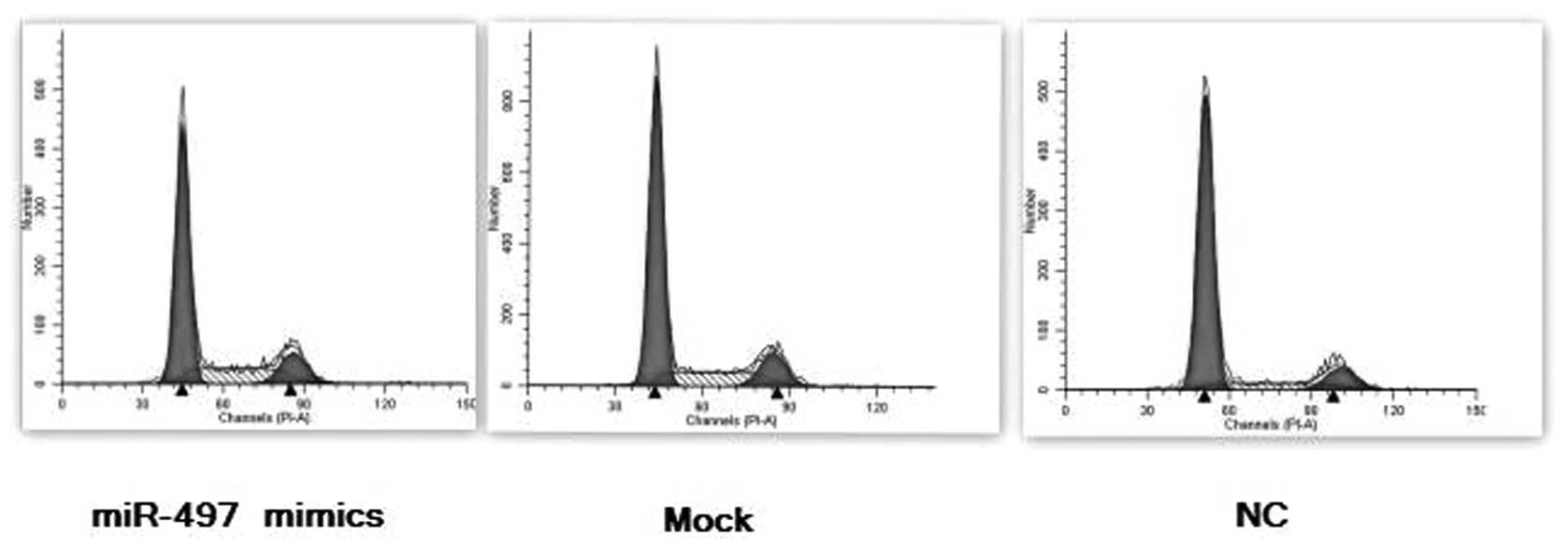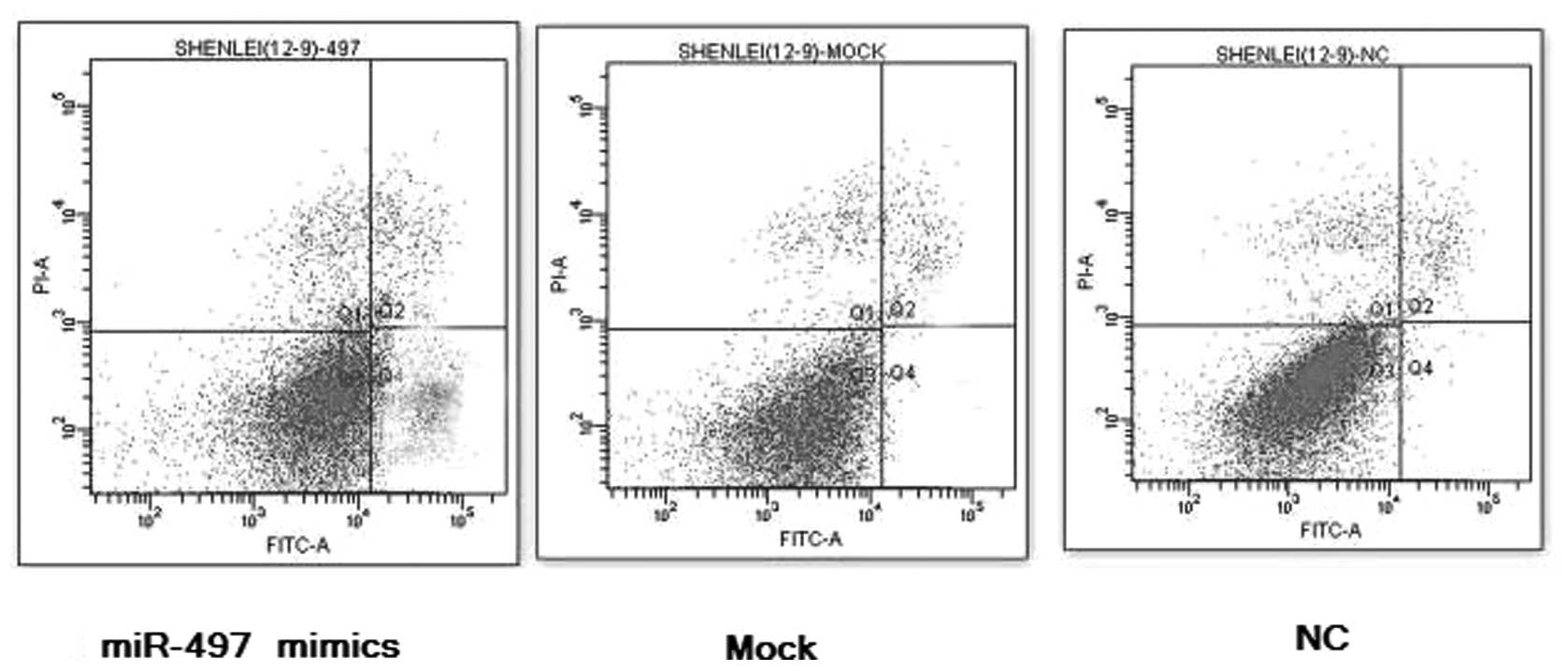miR-497 induces apoptosis of breast cancer cells by targeting Bcl-w
- Authors:
- Published online on: December 22, 2011 https://doi.org/10.3892/etm.2011.428
- Pages: 475-480
Metrics: Total
Views: 0 (Spandidos Publications: | PMC Statistics: )
Total PDF Downloads: 0 (Spandidos Publications: | PMC Statistics: )
Abstract
microRNAs are a small class of non-coding RNAs with a critical role in the tumorigenesis and maintenance of breast cancer through binding to the 3'‑untranslated regions of target mRNAs, which causes a block of translation and/or mRNA degradation. The purpose of this study was to investigate the expression of microRNA-497 (miR-497) as well as its potential role in human breast cancer. Reverse transcription-polymerase chain reaction (RT-PCR) was performed to determine the expression pattern of miR-497 in breast cancer and normal breast tissues. Correlation analysis was conducted to characterize the association of miR-497 expression abnormality with pathological factors. Proliferation, cell cycle and apoptosis assays were conducted to explore the potential function of miR-497 in human MCF-7 breast cancer cells. RT-PCR and Western blot analysis were employed to validate the downstream targets of miR-497. miR-497 expression was relatively decreased in breast cancer specimens and negatively correlated with TNM stage, lymphatic metastasis, tumor size and human epidermal growth factor receptor-2 (P<0.01). On the contrary, no correlation was found with estrogen receptor, progesterone receptor and p53 status. Functional assays revealed that miR-497 suppressed cellular growth, increased the percentage of early apoptotic cells and initiated G0/G1 cell phase arrest of MCF-7 cancer cells. RT-PCR and Western blot analysis data indicated that the overexpression of miR-497 resulted in the down‑regulation of Bcl-w at the mRNA and protein levels. miR-497 may serve as a tumor suppressor gene in breast cancer. The Up-regulation of miR-497 expression causes cellular growth inhibition and apoptotic enhancement, as well as G0/G1 phase arrest, suggesting its use as a potential therapeutic target for the treatment of breast cancer in the future.














